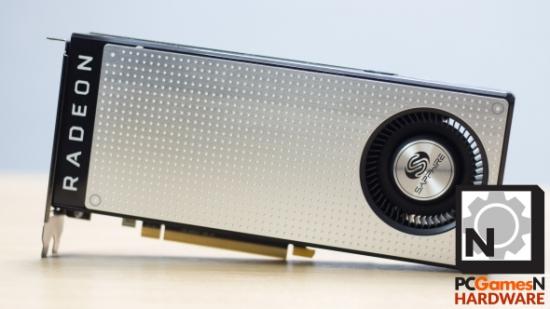Can AMD’s new Polaris GPU still deliver gaming performance worth a damn? Turns out yes, it damn well can. Though you might not like the price.
Check out our review of Nvidia’s rival mainstream Pascal card, the GeForce GTX 1060.
AMD isn’t creating reference cards for the new Radeon RX 470, so it’s down to their board partners to perfect the latest Polaris-based graphics card. And the first of AMD’s RX 470s to run the gauntlet in the PCGamesN test rig is this slightly overclocked, $200 (£180) version from AMD’s biggest partner, Sapphire.
The AMD RX 470 is the li’l sibling of the RX 480, featuring a slimmed-down GPU, less memory and should be a little lighter on the wallet. Where the suggested retail price for the RX 480 is $229 (£220), the standard RX 470 ought to come in around the $179 (£160) mark. But overclocked or not, this is still a card with a decent amount of gaming performance to keep your 1080p screen filled with lots of shiny, shiny pixels.
If you’re an impatient sort, click below to be taken directly to architecture info, our benchmark data, and that all-important out-of-10 score:
Sapphire RX 470 OC specs
Aside from the flashy silver frontage and solid metal backplate, the Sapphire Radeon RX 470 OC is physically what you’d expect to see from a standard AMD reference design. Internally though it’s got just a little bit more oomph than AMD have set for the RX 470’s reference clocks.
The single fan blower is the same design as the reference RX 480 we’ve already seen. Which is to say it’s just about adequate. It’s not going to set the world alight with its cooling performance though, more importantly, it’s also not going to set your PC alight when the RX 470 is carrying out its pixel pushing duties.
That also means the cooler extends further than the physical size of the PCB itself. Like the RX 480, the 470 has the same short circuit board design, so there ought to be small form factor variants arriving soon too. This Sapphire card is not one of those, yet is still using only a single 6-pin PCIe power connector despite its overclocker leanings.
When it comes to the GPU itself the RX 470 is using a slightly different iteration of the Polaris 10 chip AMD used in the RX 480 – we’ve gone into detail about the 14nm architecture AMD have used in the Polaris 10 GPU in our previous RX 480 analysis. As is its wont, AMD haven’t sacrificed much of the good bits in creating this second tier card. They generally spin two cards from a single GPU design, and when they do historically they’ll only chop out a block of four compute units (CUs). The CU is the name given to a cluster of GPU logic, where each houses 64 stream processors (analogous to shaders or Nvidia’s CUDA cores).
All together that means the RX 470 is only losing 256 stream processors with this Polaris 10 variant. When you put that into context, the RX 470 has a count of 2,048 versus the RX 480’s 2,304, or around 12% fewer shaders. Elsewhere it loses a few texture units, but still retains the same 32 render output units.
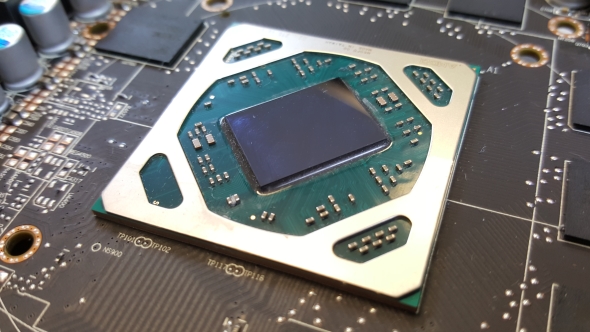
In terms of the memory configuration, this Sapphire card is a 4GB version, but is still running across an aggregated 256-bit memory bus, running at 6Gbps. All together those specs mean the relative performance of the RX 470 and RX 480 cards is mighty close.
The clockspeeds for the reference RX 470 put it at a maximum boost of 1,206MHz (compared with the RX 480’s 1,266MHz), but because of that ‘OC’ in the Sapphire card’s title you might expect a little extra. And that’s what you get, very little extra. The Sapphire RX 470 OC has been clocked just 10MHz higher out of the box. That’s a pretty meagre return, and barely deserves its ‘OC’ title.
Sapphire RX 470 OC benchmarks

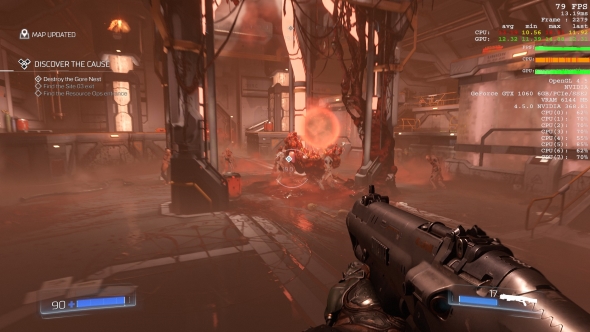
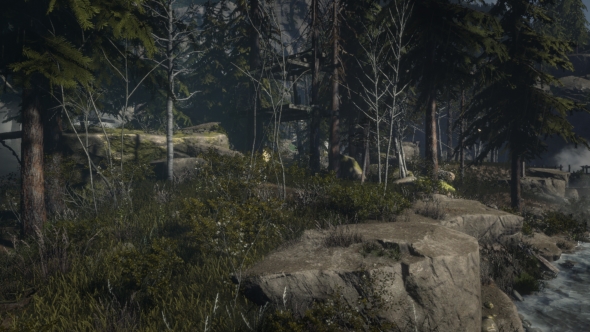
Sapphire RX 470 OC performance
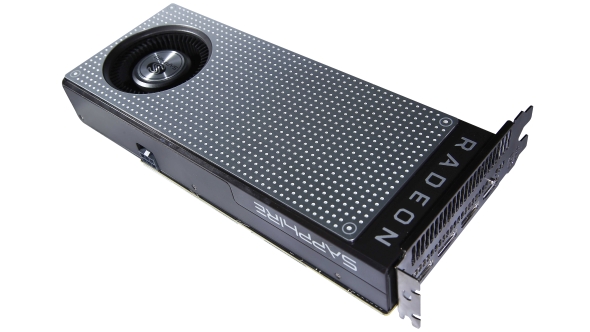
At this sub-$200 price point the Sapphire RX 470 is never going to be your go-to card for high-resolution gaming and yet, even at 4K, none of our benchmarks were ever reduced to a staccato slideshow. And at 2560 x 1440 the RX 470 performs remarkably well, producing a genuinely playable experience. With a few nips and tucks here and there in the graphics settings you’ll get smooth gaming performance in all the latest titles.
Obviously though the 1080p mark is where the AMD RX 470 isreallyable to show what it’s capable of, displaying serious gaming chops at practically the highest graphical settings possible in the latest games.
Considering how close the actual silicon inside the RX 470 is compared with its bigger RX 480 brother it shouldn’t be much of a surprise to see the two Polaris 10 cards performing at very similar levels. I would’ve expected more of a performance delta at the higher resolutions, considering the extra 4GB of GDDR5 that the RX 480 has onboard, but it seems the actual GPU itself is more of a limiting factor.
That also means it’s not a million miles away from the performance of the GTX 1060 either. The more expensive GeForce card is far more capable across the board, but there are still instances where this card – this $100 (£100) cheaper card – is actually capable of outpacing the Nvidia GPU.
At stock speeds that only occurs when we start playing around with Doom and its Vulkan build, where it’s running the latest open-source graphics API. AMD’s GPU architecture has been built from the ground up for compatibility with low-level APIs thanks to the legacy of its own Mantle software. We’ve already seen how the RX 480 is over 50% quicker than the GTX 1060 in Doom with Vulkan, and things are looking good for the RX 470 in that regard too.
At 1080p and 1440p the Sapphire RX 470 is quicker than the generally much more powerful GTX 1060, and that’s compared with when the Nvidia card’s running in its more familiar OpenGL mode. That is a pretty astounding display from the plucky little Radeon. AMD must be hoping right now that more devs get on the Vulkan API train, because the performance boost can be huge. At 1080p the extra frame rate gained by switching the RX 470 from OpenGL to Vulkan is 96%. No Radeon gamer is playing with OpenGL anymore if they’ve got any sense…
Even with the pseudo-reference cooler Sapphire attached to their RX 470 OC I was able to get a extra performance lift with a little simple GPU overclocking. AMD’s new WattMan software, found inside the Radeon Settings app, has been designed to make overclocking easier, and I squeezed another 8.5% on top of the rated GPU clockspeed. That meant at times the RX 470 was topping the 1,300MHz mark, delivering a genuinely tangible performance uplift.
And with that extra boost the performance delta between RX 470 and RX 480 really starts to close quickly. In Battlefield 4 and Rise of the Tomb Raider we achieved frame rate parity with the RX 480 reference card’s performance, and in Hitman’s DirectX 12 test the overclocked RX 470 breezes past the GTX 1060’s 1080p speeds.
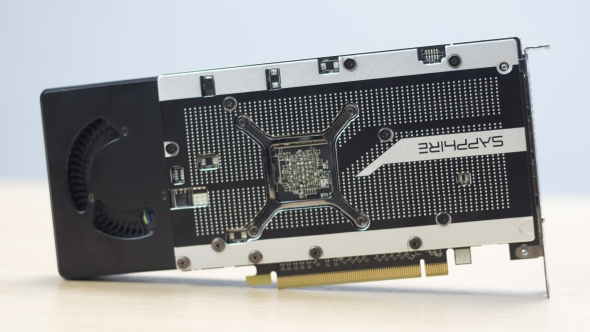
Which all sounds fantastic, but that boosted performance doesn’t come without caveats. Even at stock clocks the shiny-plated cooler struggles to stay quiet, but as soon as you start fiddling with the clockspeed you need to really boost the fanspeed to keep the temperature away from melting point.
At the 3,500RPM level the fan needs to run at to keep the GPU below 90°C the blower really starts to wheeze and whine. The jet turbine-like noise would be seriously distracting without the very best noise-cancelling headset. And if you can afford one of those then what the hell are you doing looking for a budget GPU anyways? So, while the gaming performance allows you to really close the gap on the RX 480, and sometimes even overtake the GTX 1060, doing so will really start bothering the eardrums.
AMD have to tread a very fine line with the new RX 470 though. Because it’s technologically so close to the RX 480, and not that far away in performance terms either, there’s a real danger people who might have spent a little extra on the RX 480 would get their heads turned by the newer Polaris card if it was significantly cheaper.
There’s also the question of power draw too. Where AMD’s architecture often has a lead in the modern APIs of DX12 and Vulkan, Nvidia has absolutely got efficiency nailed down. Both the RX 470 and the GTX 1060 are rated as 120W cards and yet the GTX 1060 has far lower peak platform power draw while still generally maintaining a very healthy performance lead.
Sapphire RX 480 OC verdict
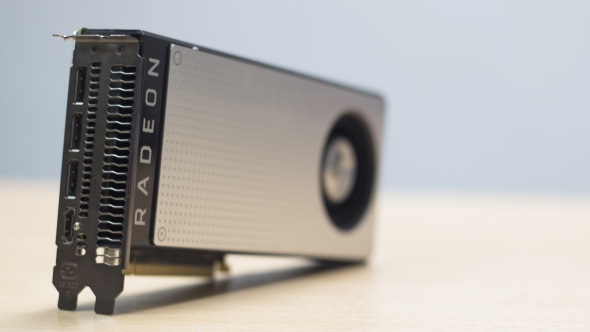
Performance in isolation is fine, but actual value has to be a consideration too. I was maybe expecting the 4GB RX 470 to come in at $150 with the 8GB cards closer to the price of the reference RX 480, but AMD have priced the lower card far closer; potentially because of just how marginal the performance delta between them is. But if that suggested $179 price for a reference-clocked RX 470 feels too steep, overclocked offerings will cost even more. The RX 470’s value proposition really starts to wane as the pricing drifts closer to better GPUs. When you’ve got a marginally overclocked card costing almost the same price as a 4GB RX 480 why would you choose the lesser GPU, however close it can get in terms of gaming performance?
Factory-overclocked cards like the Sapphire RX 470 OC then are really hard to justify at this price point. That’s made even more obvious when you look at the creaking reference blower they’ve attached to it and the fact Sapphire have only added on a pretty miserly 10MHz.
It’s a shame because the RX 470 itself could be an awesome little card. Stick a decent third-party cooler on there, go with the shorter PCB and leave the bloody clockspeed alone – it’s easier than ever to get at a GPU’s headroom, so we don’t need expensive factory-tweaked versions in the budget arena.
As it is then I can’t really recommend this Sapphire version of the RX 470. It performs admirably, giving me hope for more reasonably-priced versions of the AMD RX 470, but the Sapphire OC is just far too close to the cost of a 4GB RX 480.
